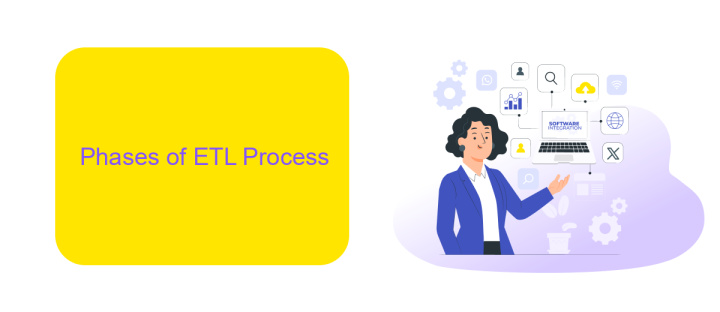What is ETL in Data Warehousing
ETL, which stands for Extract, Transform, Load, is a crucial process in data warehousing. It involves extracting data from various sources, transforming it into a suitable format, and loading it into a data warehouse for analysis and reporting. This process ensures that data is accurate, consistent, and readily available for business intelligence activities.
Introduction to ETL
ETL, which stands for Extract, Transform, Load, is a fundamental process in data warehousing. It involves extracting data from various sources, transforming it into a suitable format, and loading it into a data warehouse for analysis and reporting. This process ensures that data is accurate, consistent, and ready for business intelligence activities.
- Extract: Gathering data from multiple sources such as databases, APIs, and flat files.
- Transform: Cleaning, filtering, and structuring the data to fit the target schema.
- Load: Inserting the transformed data into the data warehouse.
Modern ETL tools and services, such as ApiX-Drive, simplify the integration process by offering automated solutions to connect various data sources. These tools help streamline data workflows, reduce manual efforts, and ensure data integrity. By leveraging such services, businesses can more efficiently manage their data, leading to better decision-making and operational efficiency.
Phases of ETL Process

The ETL process in data warehousing involves three primary phases: Extraction, Transformation, and Loading. During the Extraction phase, data is collected from various source systems, which can include databases, APIs, and flat files. This phase ensures that data is gathered in a consistent and reliable manner, often utilizing tools like ApiX-Drive to streamline the integration of disparate data sources and automate the data collection process.
In the Transformation phase, the extracted data undergoes a series of operations to convert it into a suitable format for analysis. This can include data cleaning, normalization, and enrichment. The goal is to ensure data quality and consistency across the dataset. Finally, the Loading phase involves moving the transformed data into a target data warehouse, where it can be accessed for reporting and analysis purposes. This phase ensures that data is stored efficiently and is readily available for business intelligence activities.
Benefits of ETL in Data Warehousing

ETL (Extract, Transform, Load) processes offer numerous benefits for data warehousing, ensuring that data is efficiently managed and utilized. By automating data workflows, ETL helps organizations streamline their data integration efforts, leading to better decision-making and operational efficiency.
- Data Consistency: ETL processes ensure that data from multiple sources is consistent and accurate, which is crucial for reliable reporting and analysis.
- Improved Data Quality: Data transformation steps in ETL help clean and standardize data, reducing errors and improving overall data quality.
- Scalability: ETL tools can handle large volumes of data, making it easier to scale operations as data needs grow.
- Time Efficiency: Automation of data extraction, transformation, and loading saves time and reduces the manual effort required for data management.
- Integration Capabilities: Services like ApiX-Drive facilitate seamless integration between various data sources and ETL tools, enhancing the overall data workflow.
Incorporating ETL processes into data warehousing strategies not only enhances data management but also provides a solid foundation for advanced analytics and business intelligence. By leveraging tools and services like ApiX-Drive, organizations can further streamline their data integration efforts, ensuring that they remain agile and data-driven.
Challenges in Implementing ETL

Implementing ETL processes in data warehousing can be a complex and challenging task. One of the primary difficulties involves the extraction of data from various sources, which often have different formats and structures. This requires significant effort in data mapping and transformation to ensure consistency and accuracy.
Another major challenge is ensuring data quality. During the transformation phase, data must be cleansed and validated to eliminate errors, duplicates, and inconsistencies. This step is crucial to maintain the integrity and reliability of the data warehouse.
- Data integration from multiple sources
- Maintaining data quality and consistency
- Handling large volumes of data
- Ensuring data security and compliance
- Managing changes in source data structures
To address these challenges, leveraging tools like ApiX-Drive can be beneficial. ApiX-Drive simplifies the integration process by providing a user-friendly interface for connecting various data sources. It also helps automate data workflows, reducing the manual effort required and minimizing potential errors. By using such tools, organizations can streamline their ETL processes and enhance the overall efficiency of their data warehousing solutions.
- Automate the work of an online store or landing
- Empower through integration
- Don't spend money on programmers and integrators
- Save time by automating routine tasks
Best Practices for ETL Implementation
Effective ETL implementation starts with thorough planning and understanding of data sources, transformation requirements, and target systems. It is essential to map out the data flow, identify potential bottlenecks, and define clear objectives for data quality and performance. Regularly monitor and test ETL processes to ensure they meet business requirements and handle data volumes efficiently. Additionally, consider using automation tools like ApiX-Drive to streamline integrations and reduce manual intervention, ensuring a seamless and reliable data transfer.
Data governance and security are paramount in ETL processes. Implement robust data validation and error-handling mechanisms to maintain data integrity. Ensure compliance with data privacy regulations and establish access controls to protect sensitive information. Documenting ETL workflows and maintaining version control can greatly aid in troubleshooting and future enhancements. Regularly update and optimize ETL processes to adapt to changing data landscapes and business needs. By following these best practices, organizations can achieve efficient, scalable, and reliable ETL operations.
FAQ
What is ETL in Data Warehousing?
Why is ETL important for data warehousing?
What are the typical steps involved in an ETL process?
Can ETL processes be automated?
What are the challenges associated with ETL in data warehousing?
Apix-Drive is a universal tool that will quickly streamline any workflow, freeing you from routine and possible financial losses. Try ApiX-Drive in action and see how useful it is for you personally. In the meantime, when you are setting up connections between systems, think about where you are investing your free time, because now you will have much more of it.


